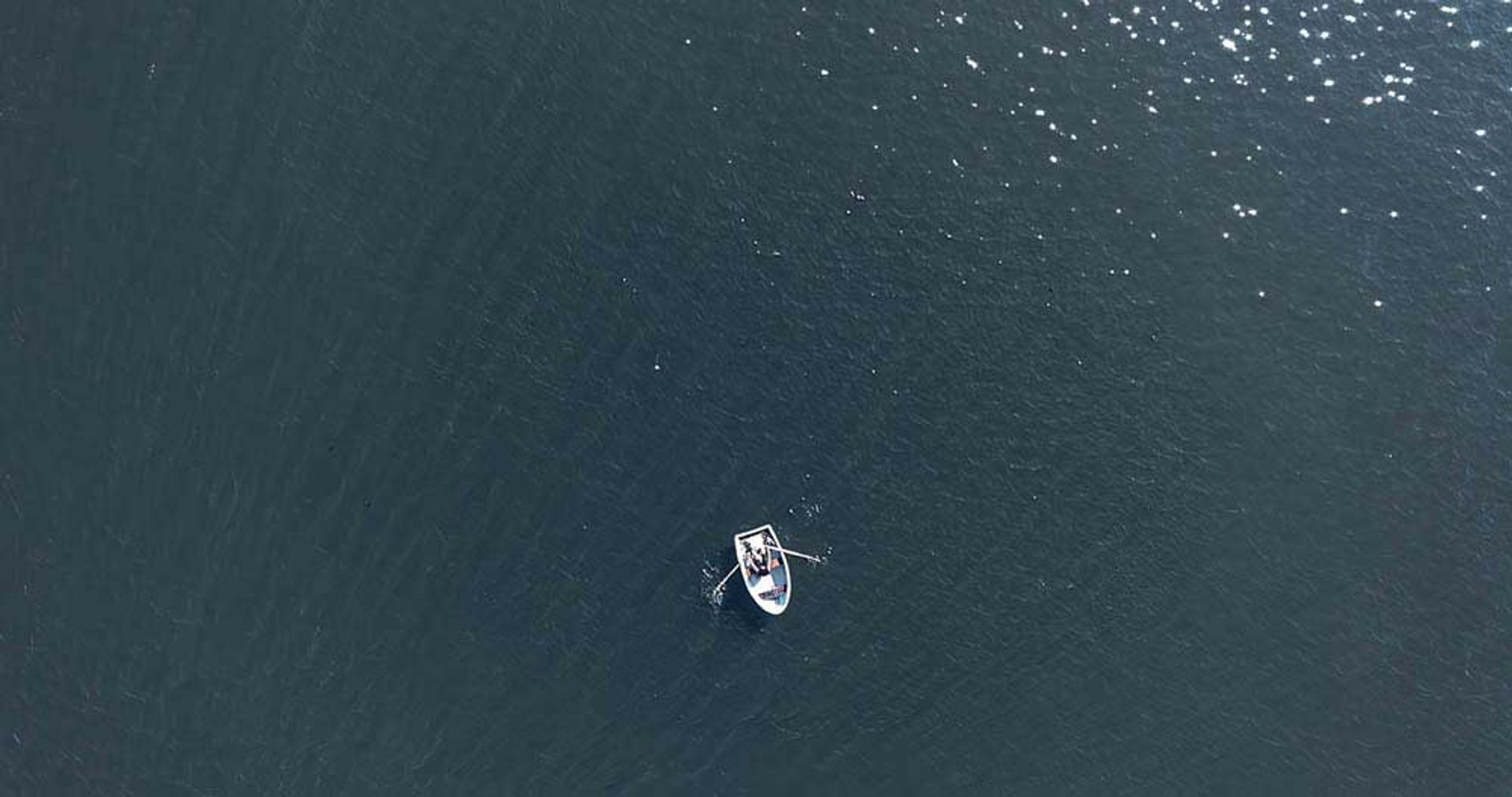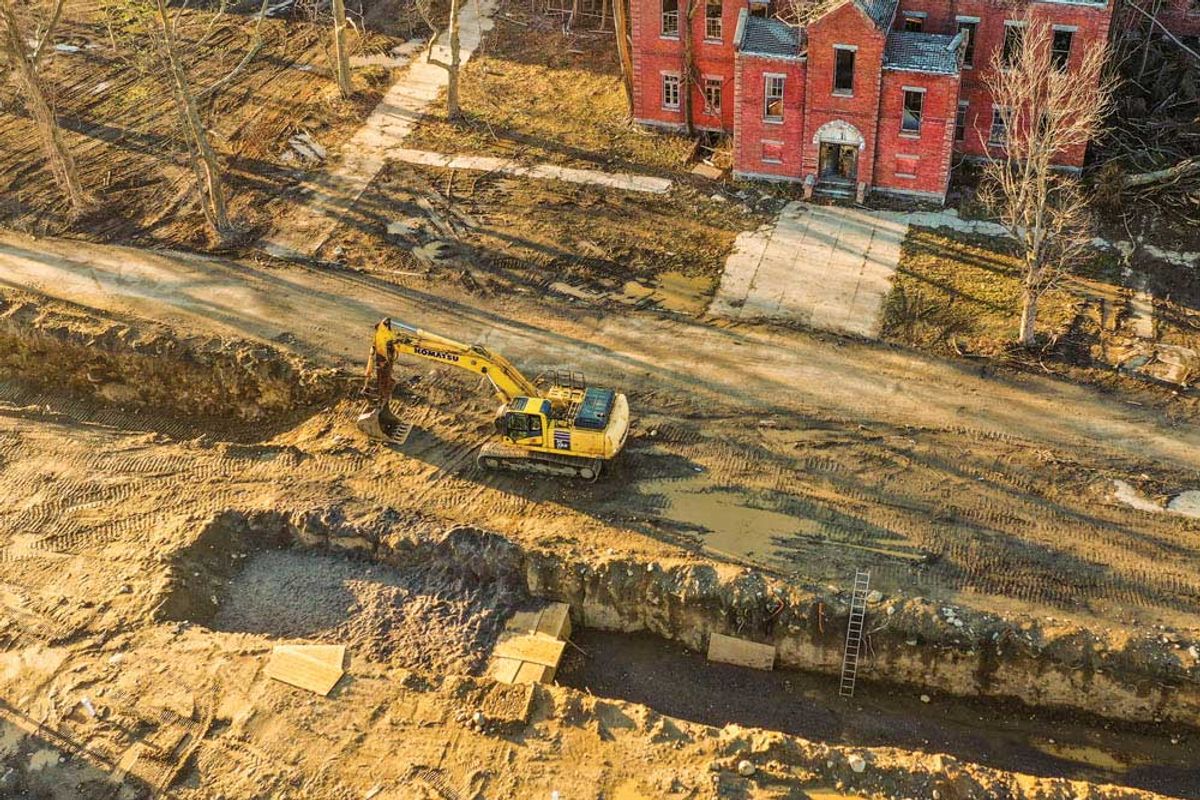The mass grave on Hart Island filled with plain wooden coffins carried by workers in hazmat suits was one of the most shocking images of the early months of the Covid-19 pandemic in New York. The number of dead interred on the narrow landmass in the Long Island Sound escalated during the pandemic, with 2020 seeing two and a half times the recorded burials of 2019. Since 1869, Hart Island has been where the city buries its unclaimed and unknown dead, and the way they are stacked together in trenches has changed little in 150 years. Until a recent transfer of the island from the Department of Correction to the Department of Parks and Recreation, inmates from Rikers Island prison did the labour of consigning the dead: three deep, with each trench containing about 150 to 162 adults or 1,000 infant and foetal remains.
Isolated off the coast of the Bronx and difficult to visit, it is a place that has often been invisible to the rest of the city. Two years since Hart Island made headlines, the artist Coco Fusco is honouring the dead who will remain on the island—where the soil has been exhumed over and over again for an estimated one million burials—long after the pandemic becomes history. Her video Your Eyes Will Be an Empty Word (2021) is debuting in the 2022 Whitney Biennial (6 April-5 September) at the Whitney Museum of American Art. In it, the artist rows alongside the island in a small dinghy and tosses flowers into the water while a meditation she wrote is performed by poet Pamela Sneed and accompanied by music by Pauline Kim Harris.
“My family’s from Cuba and it is common practice [there] that to commemorate the dead you throw flowers into the sea,” Fusco says. “And so I got this idea that I could get on a boat and go to Hart Island and throw flowers for the people who were being and had been buried there during Covid.” She adds that these people were not the ones who received florid newspaper obituaries or other tributes but instead were part of the anonymity of a body count. “It was highly likely, I thought, that they would have been undocumented immigrants without family with them or indigent people, homeless people. These are the victims who don’t get named, who don’t get lionised.”

A still from Coco Fusco’s Your Eyes Will Be an Empty Word (2021), in which she rows past Hart Island throwing flowers into the water in commemoration of the thousands of nameless people buried there Courtesy of the artist and Alexander Gray Associates, New York
Fusco’s interest in Hart Island was sparked by a pandemic research project for which she explored the history of representations of disease, from medieval woodcuts of plagues to scientific illustrations of bacteria. “I was entertaining myself but also developing a vocabulary and trying to figure out, how do artists talk about the things that are happening?”
Although advocacy from organisations such as the Hart Island Project, Picture the Homeless and the New York Civil Liberties Union has improved access for visitors over the years, Hart Island is still extremely restricted and the closest many can get is the water around it. That is the perspective in Fusco’s video, where she is filmed on the boat and the island is seen from a drone. It gives the viewer the sensation of floating above the earth, where hundreds of victims of Covid-19 are indistinguishable from those of yellow fever, tuberculosis, Aids and other diseases that have previously swept through the city. If their names were known, they may have been scrawled on their coffins in marker pen, but they are all now hidden and unmarked.
“One of the things that’s in the narration is, ‘The bodies lie together alone,’” Fusco says. “What every individual buried there shares is aloneness.”
- Whitney Biennial 2022: Quiet As It's Kept, 6 April-5 September, Whitney Museum


